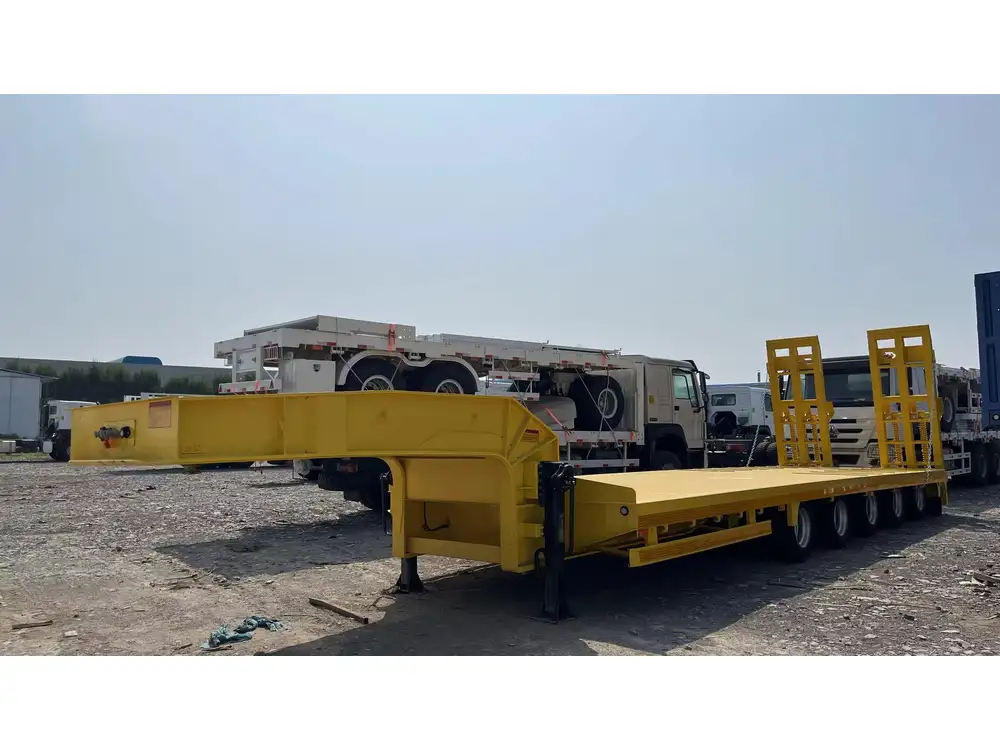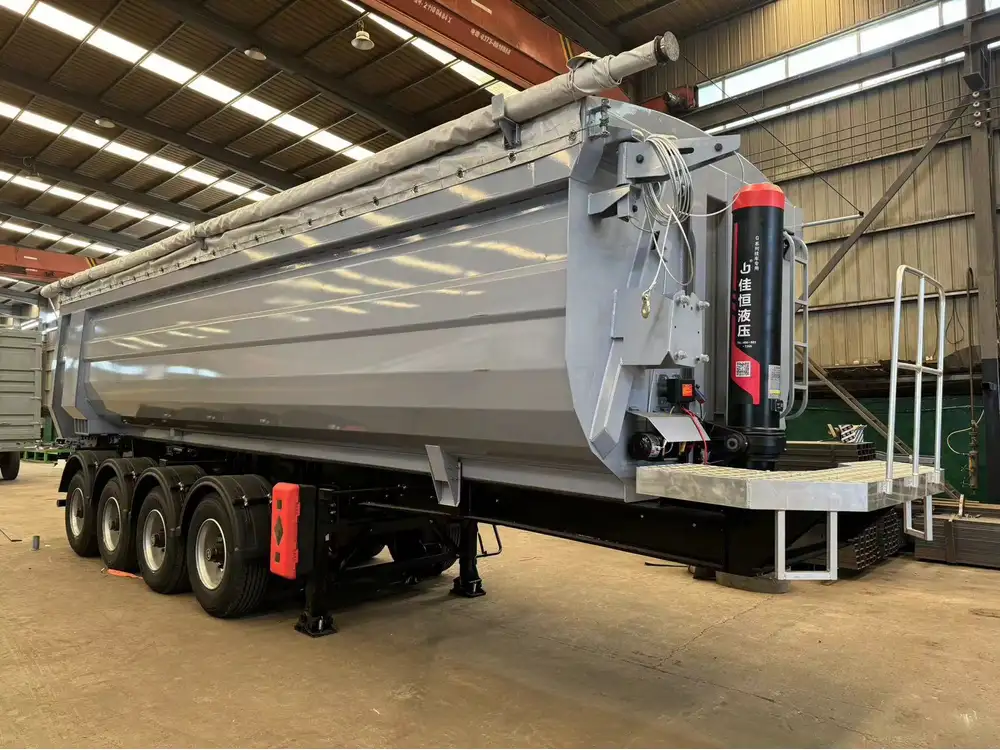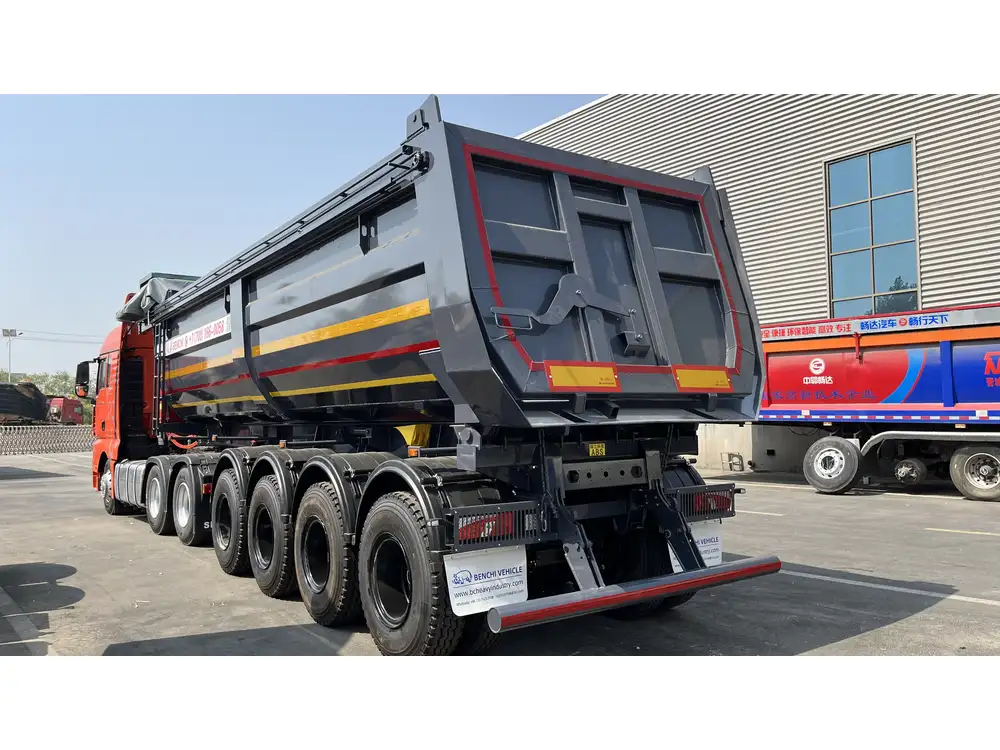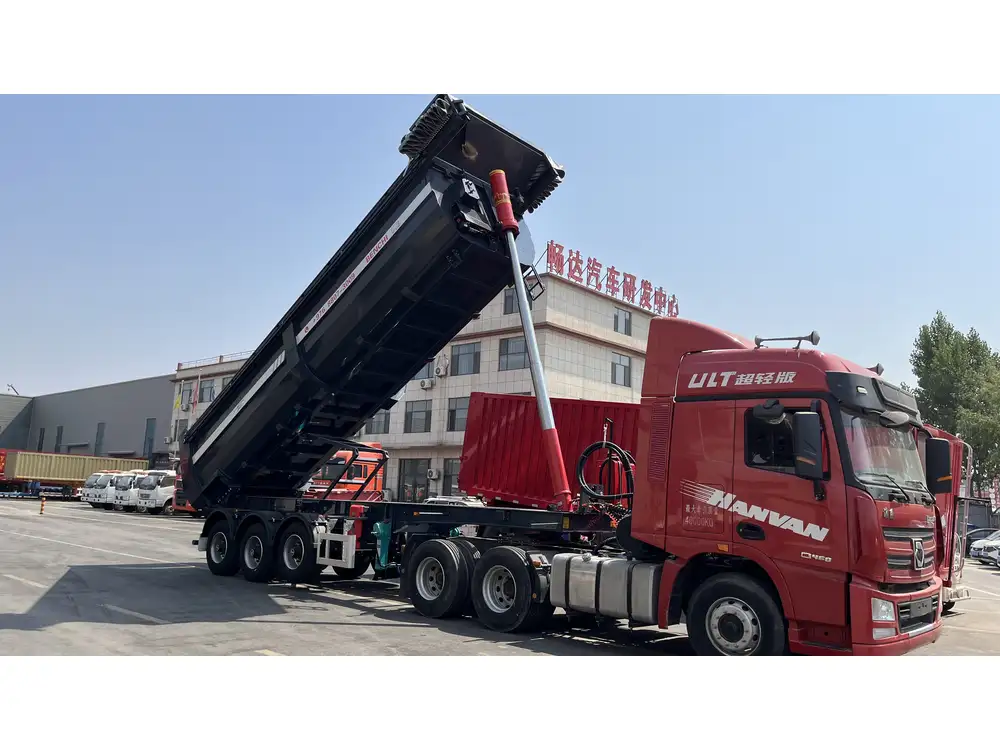Understanding 40ft Skeletal Semi-Trailers
In the expansive world of logistics and transportation, the 40ft skeletal semi-trailer stands out as a quintessential asset. Its design caters to diverse cargo forms, primarily shipping containers. Understanding the functionalities, advantages, and specifications associated with these trailers is essential for manufacturers, fleet operators, and logistics managers eager to optimize their operations.
What is a 40ft Skeletal Semi-Trailer?
A 40ft skeletal semi-trailer is crafted to transport containers efficiently. Characterized by its minimalist frame structure, the skeletal design allows for reduced weight without compromising strength. Typically, these trailers consist of a robust chassis with multiple twist locks positioned strategically to secure ISO containers of the standard size (40ft x 8ft x 8.5ft).

Key Features and Specifications
| Feature | Specification |
|---|---|
| Length | 12.2 meters (40 feet) |
| Width | 2.5 meters (8.2 feet) |
| Height | Varies with container – typically 2.6 meters (8.5 feet) |
| Load Capacity | 30,000 – 36,000 kg (66,138 – 79,366 lbs) |
| Twist Locks | 4 to 8, depending on design |
| Axles | Typically 2 or 3 |
| Weight | Approximately 5,500 – 7,000 kg (12,125 – 15,432 lbs) |
The Benefits of Using a 40ft Skeletal Semi-Trailer
1. Versatility in Transport
The primary advantage of a 40ft skeletal semi-trailer lies in its exceptional adaptability. These trailers can accommodate various types of containers, including but not limited to:
- Standard ISO containers
- High-cube containers
- Refrigerated containers
- Open-top containers

2. Enhanced Efficiency
By utilizing a skeletal design, manufacturers minimize the weight of the trailer itself, allowing for increased payload capacity. This efficiency not only reduces operational costs but also enables businesses to maximize the volume of goods transported in a single trip.
3. Durability and Strength
Despite their lightweight design, skeletal trailers are constructed with high-quality steel, ensuring resistance against wear and tear. This durability is essential for enduring the rigors of frequent loading and unloading operations, while also maintaining structural integrity during long hauls.
4. Cost-Effectiveness
Investing in a 40ft skeletal semi-trailer can lead to significant savings in fuel consumption and maintenance costs over time. Additionally, their lightweight nature can result in lower toll fees and reduced emissions, making them an environmentally friendly choice.

Optimal Usage Scenarios
Intermodal Transport: Ideal for businesses that rely on multiple modes of transportation, including sea, rail, and road. The flexibility to transfer containers seamlessly between these platforms maximizes efficiency in logistics.
Construction and Project Cargo: When transporting oversized or irregularly shaped loads that can fit within a 40ft container, these trailers act as a reliable solution due to their robust design and stability during transit.
Automotive Industry: Mainly for transporting automotive components and assembled vehicles that have been containerized, skeletal trailers serve as a cost-effective method of transportation across borders.
Factors to Consider When Choosing a 40ft Skeletal Semi-Trailer
Axle Configuration: Depending on your transport needs, different axle configurations (single vs. tandem) can influence stability and load capacity.
Manufacturer Reputation: It’s essential to source trailers from reputable manufacturers known for quality craftsmanship and reliable after-sales service.
Regulatory Compliance: Check that the trailer meets all local and international transport regulations to avoid penalties and ensure safety during operations.
Maintenance and Repairs: Assess the availability of spare parts and the ease of servicing to minimize downtime.
Maintenance Tips for Longevity
Maintaining a 40ft skeletal semi-trailer is crucial for ensuring its longevity and performance. Below are essential maintenance practices:

1. Routine Inspections
Conduct thorough inspections of:
- Frame and chassis for cracks or corrosion
- Twisting locks for operational efficiency
- Tires for adequate tread depth and inflation levels
- Brake systems to ensure responsiveness
2. Regular Lubrication
Lubricate moving parts, including:
- Axles
- Joints
- Twist locks
3. Washing and Cleaning
Keep the trailer clean from grime, mud, and salt, especially during winter. Cleaning helps prevent rust and corrosion, significantly extending the trailer’s life.

4. Keeping Records of Maintenance
Maintain a detailed log of inspections, repairs, and parts replacements. This log helps streamline future maintenance and can play an instrumental role in resale value.
Innovative Technologies in Modern 40ft Skeletal Semi-Trailers
As technology evolves, so does the design and functionality of 40ft skeletal semi-trailers. The incorporation of innovative technologies enhances performance, safety, and user experience. Key advancements include:
1. GPS Tracking Systems
This technology ensures real-time monitoring of the trailer’s location, improving logistics management and enhancing security against theft.

2. Load Sensors
Integrated load sensors assist in monitoring weight distribution, which is crucial for maintaining road safety and preventing overloading.
3. Automated Braking Systems
Modern skeletal trailers may feature advanced safety systems, including automated braking which responds to potential hazards on the road.
Addressing Common User Concerns
What’s the cost of a 40ft skeletal semi-trailer?
Prices can vary significantly based on manufacturer, specifications, and additional features, ranging from $20,000 to $50,000 or more.How do I choose the right skeletal semi-trailer?
Evaluate your load requirements, compatibility with existing equipment, budget, and intended use. Consulting with experts or peer reviews can provide invaluable insights.Are there financing options available?
Many manufacturers provide flexible financing solutions. Banks and financing companies also offer alternatives tailored to help businesses manage upfront costs.How do I know if my trailer is overloaded?
Utilizing load sensors can prevent such issues, but if you lack this technology, weigh your trailer at a certified weigh station before transport.

Comparison with Other Trailer Types
| Trailer Type | Loading Capacity | Best For | Price Range |
|---|---|---|---|
| Flatbed Trailers | 60,000 lbs (27,215 kg) | Constructed materials, machinery | $20,000 – $60,000 |
| Reefer Trailers | 44,000 lbs (19,958 kg) | Temperature-sensitive goods | $25,000 – $70,000 |
| Curtain Side Trailers | 45,000 lbs (20,411 kg) | Quick-loading/unloading of packaged goods | $30,000 – $65,000 |
| 40ft Skeletal Semi-Trailer | 66,138 lbs (30,000 kg) | Intermodal transport of containers | $20,000 – $50,000 |
Conclusion
In conclusion, 40ft skeletal semi-trailers are a vital component in the logistics and transportation industry, offering unparalleled versatility, efficiency, and durability. Whether your business demands intermodal transport solutions or specialized cargo handling, these trailers prove their worth as a reliable option.
Investing in a top-quality 40ft skeletal semi-trailer not only maximizes your transport capabilities but also empowers your business to meet the ever-evolving demands of the market efficiently. By staying informed about industry advancements and maintaining your equipment effectively, you are better positioned to navigate the complexities of the logistics landscape, ensuring continued success and growth for your operations.



